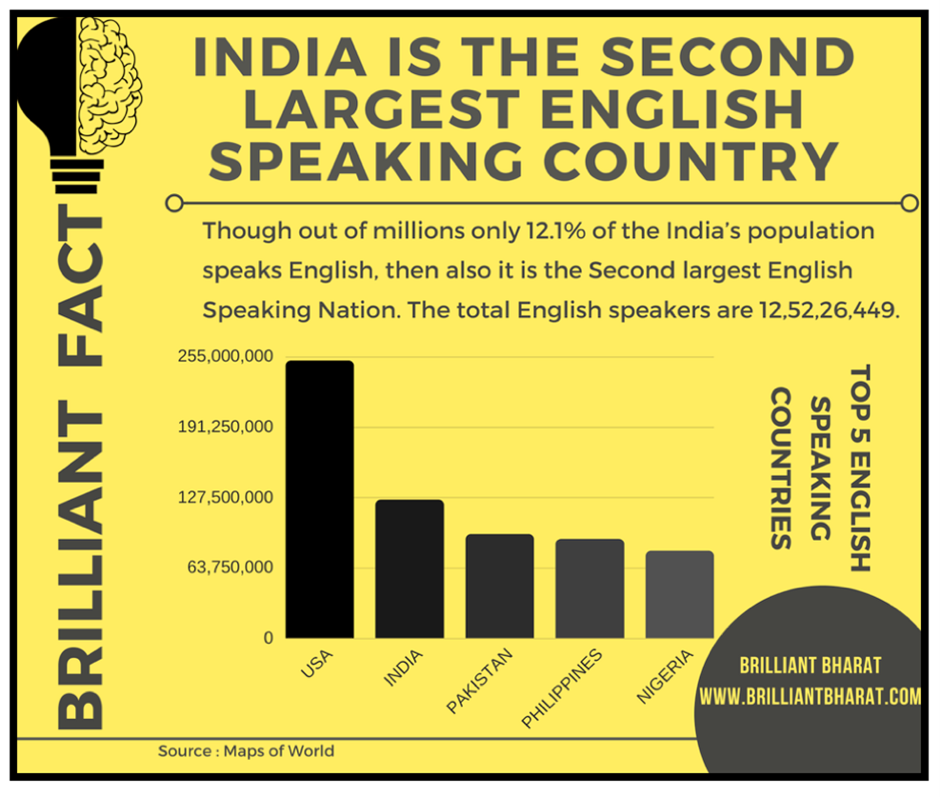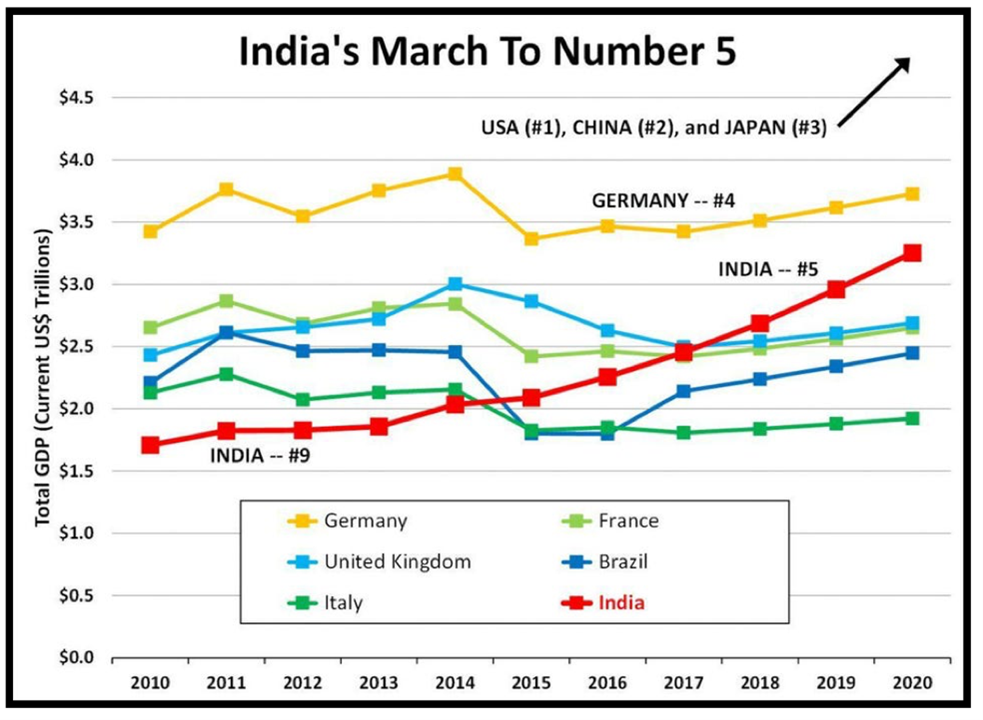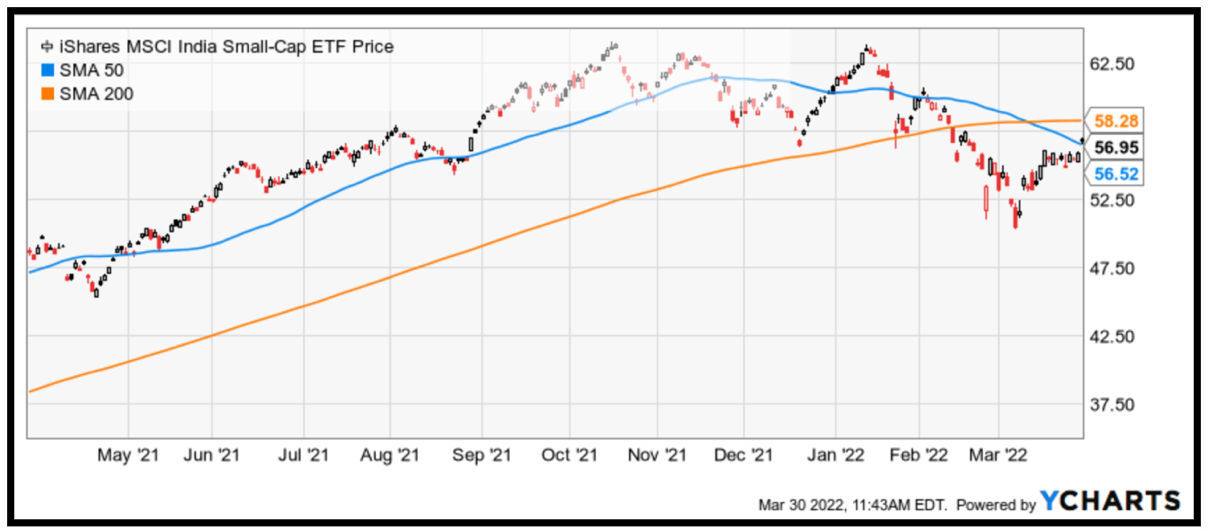 |
| By Tony Sagami |
I’m traveling this week. And while on my way to Seattle to see my precious grandchildren, I’m transiting through New Delhi, India. And since I’ve never seen the Taj Mahal, I decided to spend a few days in the area.
India is unlike anywhere else in the world.
Its rich culture, history, food, landscape and wonderful, friendly people make it one of the most amazing places on our planet.
Moreover, India is one of the fastest growing economies in the world … and the country should absolutely be on your investment radar.
Get this:
1. In order, the six largest economies by gross domestic product (GDP) in the world are the U.S., China, Japan, Germany, the United Kingdom … and India.
2. Second only to the U.S., India has the most English-speaking citizens on the planet. An estimated 200 million Indians speak fluent English.
Don’t underestimate the importance of those 200 million English speakers, either.
Language is how people connect, and the widespread use of English is one of India’s most important economic strengths. It has led to hundreds of thousands of customer service and tech jobs.
According to the International Monetary Fund, India is about to overtake the U.K. to become the world's fifth largest economy.
India is growing like a weed; its GDP has been growing at roughly 7% per year ever since Prime Minister Narendra Modi took office in 2014.
In fact, Indian economic growth is accelerating, expected to increase by 9.2% this year and hit $3 trillion for the first time ever … making the country one of the fastest growing major economies in the world.
That growth is substantially fueled by India’s talented, immense workforce. Home to 1.3 billion people — 18% of the world’s population — India’s population of 234 million between the ages of 15 and 24 happen to be some of the best educated in the world.
Get this: India produces over 1.5 million engineers a year, the largest number in the world.
Not only are those Indian engineers plentiful, but they are also among the best in the world. The Indian Institute of Technology entrance test — the JEE — is considered the most difficult entrance exam in the world.
Why is it so hard? Because 1.1 million brilliant Indian students battle to get one of the coveted 11,000 admissions into the Indian Institute of Technology.
For perspective, roughly 6% of the students that apply to Harvard are accepted compared to only 0.1% at the Indian Institute of Technology.
And boy are those Indian graduates productive: 33% of all companies founded by immigrants in the U.S. were founded or co-founded by Indians.
Moreover, Indian entrepreneurs found more technology/engineering firms than the next nine immigrant groups combined! The combination of the booming Indian economy and its highly educated engineering workforce is a recipe for big potential stock market profits.
The massive growth of the Indian economy, coupled with its incredibly high output of engineers and tech-sector workers, is a tremendous investing opportunity.
There are several India-focused exchange-traded funds (ETFs) to consider. The five I’ll discuss today all have holdings weighted primarily towards tech, energy and financial services. In addition …
Make sure to check out Dr. Martin Weiss’ video on the Great Financial Crisis of 2022 and how you can both protect your finances and build wealth swiftly. To start, click here now.
5 Promising Indian ETFs
1. iShares MSCI India ETF (INDA)
The majority of INDA’s holdings are in the financial services (25.51%), tech (17.76%) and energy (11.93%). Shares, priced at $45.06 at the time of writing, are sitting right in the middle of its 52-week range of $39.13 — $50.85. The ETF has an expense ratio of 0.69%.
2. WisdomTree India Earnings Fund (EPI)
Despite trading sideways for most of the past year, shares of EPI are up 15.68% over that timeframe and are fewer than $3 off the 52-week high. Its expense ratio is a bit high at 0.84%, but its holdings — like INDA’s — are largely weighted toward financial services (25.72), tech (19.36%) and energy (10.3%). Add to that basic materials at 14.31%, and you have an ETF well-leveraged to inflation and commodities.
3. iShares India 50 ETF (INDY)
INDY is up just 4.12% over the past year but jumped 3.15% over the past month. Its expense ratio is also a bit high at 0.9%, but its holdings are heavily weighted to financial services at 37.2% — a sector that traditionally performs well during inflationary periods.
4. iShares MSCI India Small-Cap ETF (SMIN)
SMIN is up 17.32% over the past year. After a significant drop in share price in early March, the ETF has recovered and is testing its 50-day moving average as resistance.
Its expense ratio is 0.81%. SMIN’s holdings are more evenly distributed among basic materials (16.74%), financial services (16.39%), industrials (16.08%), consumer cyclical (12.52%), tech (10.56%) and healthcare (10.4%).
5. Invesco India ETF (PIN)
PIN is up 6.94% over the past year, but up 12.25% since taking the same plunge as SMIN on March 7. Its expense ratio is 0.78% and its holdings — like the others — are largely in tech (20.46%), financial services (14.39%), basic materials (13.54%) and energy (13.35%).
And that’s only a partial list. There are eight more India-focused ETFs. Plus, there are another 12 Indian companies listed on the NYSE and Nasdaq.
That means investors can buy those 12 Indian stocks just as easily as blue chips like Microsoft (MSFT), General Electric (GE) or Boeing (BA).
I’ll be seeing the sites, but definitely consider adding some exposure to the incredible opportunities in India.
Best wishes,
Tony
PS: We recognize that our readers are also listeners. So, we've added a brand-new feature at the top of each post enabling you to listen to the article. This is for portability, accessibility and for those of you who love to multi-task and listen to the trade while you place it.





